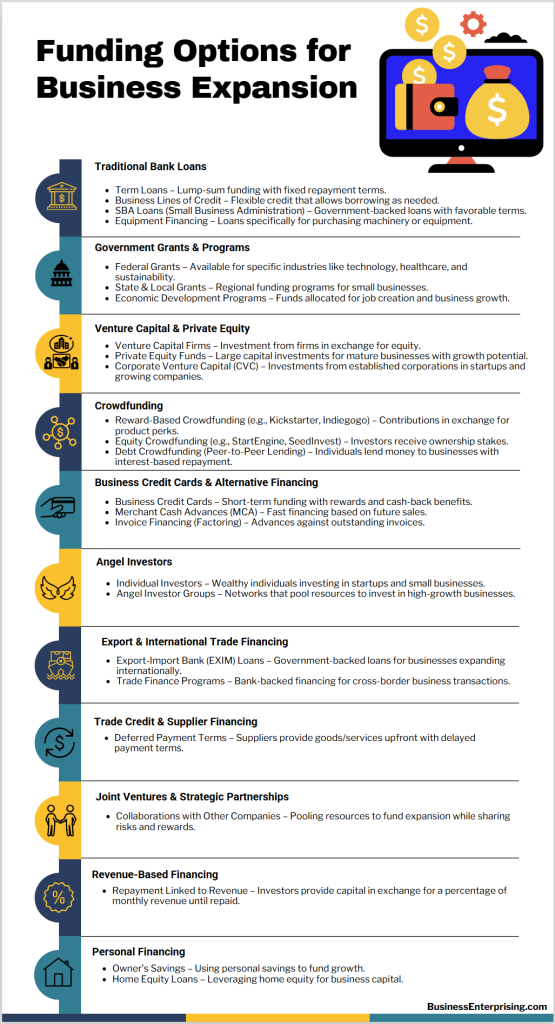
Additionally, consider bank loans. They provide medium or long-term finance. However, they often require collateral. Traditional lenders assess your credit history. Moreover, consider SBA-backed loans. The Small Business Association offers programs designed for small businesses. These loans are typically less risky and more accessible.
Various funding options support business growth. Consider your business needs and growth strategy. Choose the option that aligns with your goals. Consult with financial advisors for personalized advice.
Bootstrapping: Self-Funding Your Business
Bootstrapping means self-funding your business. You use personal savings and reinvest profits for growth. This approach avoids external financing, giving you full control. However, it also means slower growth and higher personal risk.
Firstly, consider the advantages of bootstrapping. You retain full ownership, avoiding the need to share profits or decisions. This independence allows you to focus on your vision. Additionally, bootstrapping forces you to be financially disciplined. You learn to manage resources efficiently, which can lead to a sustainable business model. Moreover, you avoid the pressure of repaying loans or meeting investor expectations. This freedom can be particularly beneficial in the early stages.
However, bootstrapping has its limitations. Growth can be slow because you rely on personal funds and reinvested profits. This can be frustrating when you see opportunities but lack the capital to seize them. Furthermore, the financial risk falls entirely on you. Business setbacks can directly impact your personal finances. Also, you may struggle to compete with well-funded rivals. They can outspend you on marketing, research, and development. Therefore, consider your long-term goals and funding options for business growth.
Bootstrapping offers control and sustainability. However, it comes with slower growth and higher personal risk. Weigh these factors carefully before deciding. Your personal financial situation and business goals should guide your choice.
Traditional Bank Loans and Business Lines of Credit
Traditional bank loans and business lines of credit are popular funding options for business growth. They offer different benefits and suit various needs. Firstly, consider traditional term loans. Banks assess loan eligibility based on several factors. Your credit history, business revenue, and operational duration are crucial. A strong credit score, typically 670 or higher, increases approval chances. Additionally, banks review your financial statements and legal documents. The application process can be rigorous, often taking up to two weeks. However, once approved, you receive a lump sum. You repay this amount with interest over a set period. This structure suits long-term investments or specific projects.
Meanwhile, business lines of credit offer more flexibility. They function similarly to credit cards. You can draw funds up to a certain limit and pay interest only on the amount borrowed. This makes them ideal for managing cash flow or covering short-term expenses. Moreover, lines of credit are revolving. As you repay, the funds become available again. This feature is particularly useful for ongoing operational needs. However, qualifying for a line of credit also requires a strong credit history. Banks may offer lower interest rates compared to credit cards. But, they might have stricter qualification criteria than online lenders.
Comparatively, SBA loans are another option. The Small Business Administration backs these loans, reducing risk for lenders. This backing can make them easier to obtain than traditional bank loans. SBA loans offer competitive rates and terms. But, the application process can be detailed and slow. They suit businesses looking to acquire real estate, boost working capital, or purchase equipment.
Venture Capital and Angel Investors
Venture capital and angel investors provide equity funding. They offer capital in exchange for ownership stakes. This approach can fuel growth but comes with trade-offs. Firstly, consider venture capital firms. They pool funds from various investors. Their investments are typically large, often millions of dollars. This capital can drive significant growth. However, venture capitalists expect substantial returns. They usually take an active role in your business. This involvement can mean giving up considerable control. Additionally, they conduct thorough due diligence. Their investment process is rigorous and time-consuming.
Meanwhile, angel investors are individuals who invest personal funds. They often invest in early-stage startups. Their investments are smaller, typically ranging from $25,000 to $100,000. Angel investors take on higher risks. They may not expect immediate returns. However, they still seek a return on investment. Angel investors offer valuable mentorship and connections. They can provide guidance and industry insights. However, their involvement varies. Some may want a hands-on role, while others prefer minimal involvement.
Both options offer unique benefits and drawbacks. Venture capital provides significant funding but requires giving up control. Angel investors offer mentorship and smaller investments. However, they may not provide the same level of capital. Consider your business goals and funding needs. Evaluate these options as part of your funding options for business growth.
Crowdfunding and Peer-to-Peer Lending
Crowdfunding and peer-to-peer lending are popular funding options for business growth. They allow you to raise capital from the public. Platforms like Kickstarter, Indiegogo, and GoFundMe connect you with potential backers. Firstly, consider crowdfunding. It comes in two main forms: rewards-based and equity-based. Rewards-based crowdfunding offers backers perks in exchange for their support. You set a funding goal and deadline. If you meet the goal, you receive the funds. However, if you fall short, you get nothing. This approach is low-risk for backers. They do not expect a financial return. Meanwhile, equity-based crowdfunding offers backers a stake in your company. They become shareholders. This approach can provide significant capital. However, you give up some ownership and control.
Additionally, consider peer-to-peer lending. It matches borrowers with investors through online platforms. You receive a loan from multiple investors. You repay the loan with interest over time. This approach offers more predictable returns for investors. However, it comes with the risk of default. You must repay the loan regardless of your business’s success. Peer-to-peer lending is a direct alternative to bank loans. It can provide greater flexibility with interest rates. However, it requires a strong credit history.
Both crowdfunding and peer-to-peer lending offer unique benefits and risks. Crowdfunding can provide significant capital without immediate repayment. However, it requires giving up some ownership or offering rewards. Peer-to-peer lending offers predictable returns. However, it comes with the responsibility of repayment. Consider your business needs and goals. Evaluate these options as part of your funding strategy.
Government Grants and Small Business Incentives
Government grants and small business incentives offer valuable funding options for business growth. They provide financial support without requiring repayment. Firstly, consider government grants. The federal government offers numerous grants for small businesses. You can find these opportunities on Grants.gov. This site lists thousands of grants across various industries. However, the application process can be competitive. You must meet specific eligibility criteria. Additionally, you must comply with reporting and auditing requirements.
Additionally, consider small business incentives. The federal government offers tax credits and incentives for small businesses. For instance, the Employee Retention Credit helps businesses affected by the COVID-19 pandemic. It provides a refundable tax credit for eligible employers. Moreover, state and local governments offer various incentives. For example, California provides tax credits for businesses conducting research activities. These incentives can offset the costs of research and development.
Government grants and small business incentives offer significant funding opportunities. They support various aspects of business growth. However, the application process can be complex. You must meet specific eligibility criteria and comply with reporting requirements. Consider these funding options as part of your overall business strategy.
Revenue-Based Financing and Alternative Lending Options
Revenue-based financing and alternative lending options offer flexible funding solutions for fast-growing businesses. They provide capital without traditional constraints. Firstly, consider merchant cash advances. This option provides a lump sum in exchange for a percentage of future debit and credit card sales. Repayment occurs as sales happen. This approach is useful for businesses with fluctuating revenues. However, it can be expensive due to high fees.
Additionally, consider revenue-share agreements. In this model, lenders provide capital in exchange for a percentage of future revenue. Repayment aligns with your business’s cash flow. This approach is non-dilutive, meaning you retain full ownership. However, the total repayment amount can be high.
Moreover, consider fintech lending platforms. These platforms use technology to streamline the lending process. They offer various financing options tailored to different business needs. Fintech lenders often provide quick approvals and flexible terms. However, they may have higher interest rates compared to traditional banks.
Revenue-based financing and alternative lending options support fast-growing businesses. They offer flexible funding solutions that align with your business’s cash flow. Consider these options as part of your funding options for business growth.
Conclusion
In conclusion, revenue-based financing and alternative lending options offer valuable funding solutions. They support fast-growing businesses by providing flexible capital. Firstly, consider your business needs. Different funding options for business growth suit different situations. For instance, merchant cash advances offer quick funding. However, they can be expensive. Meanwhile, revenue-share agreements align repayment with your cash flow. This approach helps manage fluctuating revenues.
Additionally, fintech lending platforms streamline the lending process. They offer tailored financing options for various business needs. However, they may have higher interest rates. Therefore, weigh the pros and cons of each option. Consider your business’s unique needs and growth trajectory.
Moreover, consult with financial advisors. They provide valuable insights into the best funding options for your business. Their expertise helps you make informed decisions. In summary, explore these alternatives to traditional financing. Combine them with other funding options to diversify your capital structure. This approach supports your business’s long-term success.



